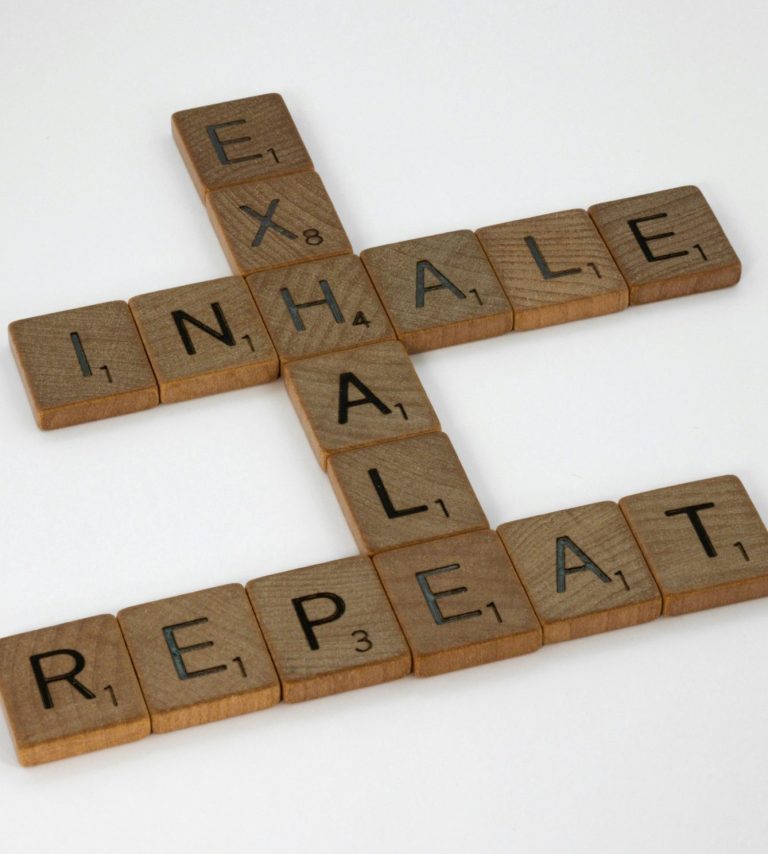Breath Meditation
"The breath is the bridge which connects life to consciousness" — Thich Nhat Hanh
Breath meditations fall under the category of focused attention meditations, because as the name suggests, we use the breath as a point on which to focus.
There are several different techniques in which you can use the breath to meditate:

Labelling the breath
Without changing the pattern of breathing in any way, attach a label silently in your mind as each breath comes and goes.
"I am breathing in, I am breathing out"
"Inhale, exhale"
"In, out"
Box breathing
This is a commonly used technique for relaxation or calming an anxious mind. The aim is to breathe in, pause, breath out and pause each for the same length of time.
Breathe in for 4
Pause for 4
Breathe out for 4
Pause for 4
Repeat
4-7-8 breathing
Similar to box breathing in terms of counting time, however this technique aims to make the exhale much longer than the inhale. It is also great for relaxation or when anxious.
Breathe in for 4
Pause for 7
Breathe out for 8
Repeat
You'll notice this overlaps with a mindfulness meditation.
In this technique, spend time being curious about your breath, noticing where you feel its movement, what its pattern is, without trying to change it in any way. As the name suggests, this is also a mindfulness technique.
Notice where you feel the breath entering your body. Perhaps you feel cool air at the nostrils, or air brushing over your lips.
Follow the path of the breath as it moves from your nose or mouth, down the throat, to the chest and abdomen, then notice its movement back out again.
Are the breaths deep or shallow? Long or short?
You can try placing a hand over your chest or abdomen to feel the movement your breath creates in your body.
Mindful Breathing


Counting the breaths
This is a different labelling technique, where instead of using silent words, we label the breath with numbers 1-10.
Each inhale and exhale adds a number to your silent counting, and if you notice you have become distracted, bring yourself back to the breath and start at 1 again.
It is different from the 4-7-8 or box breathing techniques because we are not manipulating the breaths in any way, simply counting them as they come.
Inhale - "1"
Exhale - "2"
Inhale - "3"
Exhale - "4"
Inhale - "5"
Exhale - "6"
Inhale - "7"
Exhale - "8"
Inhale - "9"
Exhale - "10"
Repeat


Benefits of breath meditations
Techniques in which we manipulate the breath, such as box breathing and 4-7-8 breathing are great ways to reduce anxiety because they switch on our bodies relaxation response. This helps to lower your heart rate and blood pressure, and produces a feeling of calm in the body and mind, which is why these techniques are sometimes suggested for those who experience panic attacks.
The techniques in which we are observing the breath without changing it, help us to bring the mind into a place where there is no room for worrying, overthinking or ruminating. By focusing on the breath, it is like shining a spotlight on this particular bodily function, and moving it away from other things which might have been dominating our thoughts. Training the mind in this way is really helpful if you often find yourself worrying about the future or ruminating over past events.
The breath is a great place to start with meditation because it is something we all have - there is no need to go to a specific place, buy any special equipment or have any particular skill to be able to focus on the breath. You can do it anywhere, and for as short or long a time as you have available - it's incredibly versatile!
Although the concept is very simple, breath meditations are not always easy - even experienced meditators can struggle to maintain focus on the breath sometimes.
Do not be disheartened if you find these meditations difficult. Your breath is always with you, so you can practise again and again and again.
We need your consent to load the translations
We use a third-party service to translate the website content that may collect data about your activity. Please review the details in the privacy policy and accept the service to view the translations.

